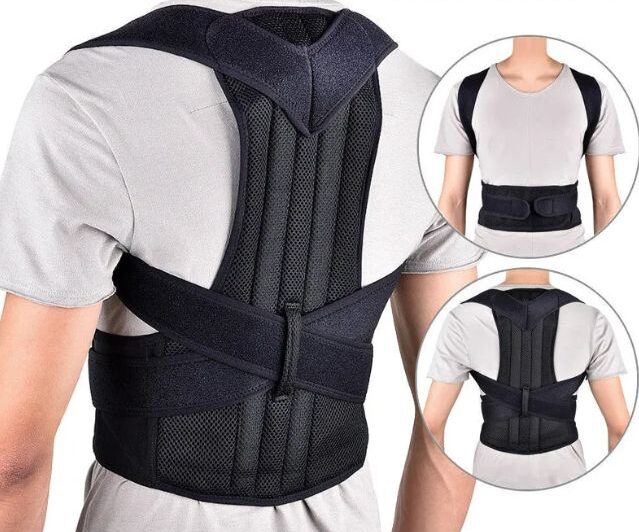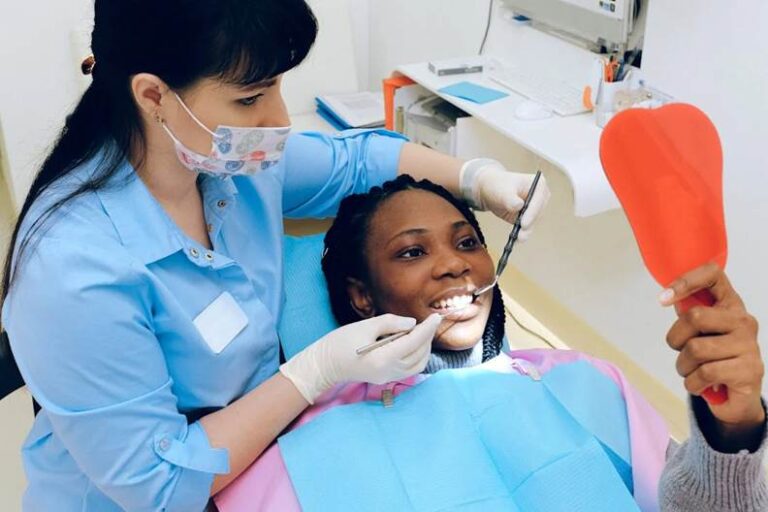The Importance of Back Support: How Proper Posture Can Prevent Pain and Improve Overall Health
Are you tired of dealing with back pain? Do you find yourself slouching or hunching over throughout the day? If so, it’s time to pay attention to your posture and give your back the support it needs. Back support is not just about sitting up straight; it’s about maintaining proper alignment that can prevent pain and improve your overall health. In this blog post, we’ll explore the importance of back support, discuss different types of braces for lower back pain relief, delve into the benefits of proper posture, and provide tips on choosing the right back support for you. So let’s dive in and discover how a little extra support can make a world of difference!
The Need for Back Support
Back support is more than just a luxury; it’s a necessity for maintaining a healthy back and preventing pain. Our modern lifestyle often involves long hours of sitting, whether at work, in front of the computer, or during our daily commute. This sedentary behavior can lead to poor posture and put excessive strain on our backs. That’s where back support comes in.
By providing stability and alignment, back support helps to distribute the load evenly across your spine, reducing the risk of injury and discomfort. It acts as a reminder to sit up straight and maintain proper posture throughout the day. Whether you’re dealing with chronic back pain or simply want to prevent future issues, incorporating back support into your routine is essential.
Without adequate support, the muscles in your lower back can become weak and fatigued over time. This can result in stiffness, tension headaches, and even more serious conditions like herniated discs or sciatica. By investing in proper back support solutions such as braces or orthoses tailored to your specific needs, you can give your spine the extra care it deserves – keeping you comfortable, mobile, and pain-free for years to come!
Where Do You Need Support?
When it comes to back support, it’s important to understand where you need it the most. The lower back is a common area that requires extra support, as this is where many people experience pain and discomfort. Poor posture and prolonged sitting can put strain on the lower back, leading to muscle imbalances and potential injury.
Another area that may require support is the upper back and shoulders. If you find yourself hunching forward or slouching throughout the day, you may benefit from additional support in this region. A brace or device that helps align your spine properly can alleviate tension and promote better posture.
Don’t forget about your neck! Many people experience neck pain due to poor alignment or excessive screen time. Supporting your neck with a pillow or specialized collar can provide relief and prevent further discomfort.
Identifying which areas of your back need extra support is crucial for maintaining proper posture and preventing pain. By addressing these specific needs with appropriate braces or devices, you can improve your overall health and well-being.
Types of Back Braces Used for Lower Back Pain Relief
When it comes to finding relief from lower back pain, one option that many people turn to is the use of back braces. These supportive devices are designed to provide stability and reduce strain on the lower back muscles and spine. There are several different types of back braces available, each offering unique benefits depending on your specific needs.
One type of back brace commonly used for lower back pain relief is the lumbar support belt. These belts typically wrap around the waist and provide compression and support to the lower back region. They are often adjustable, allowing you to customize the level of support based on your comfort level.
Another type of brace frequently utilized for lower back pain is a rigid or semi-rigid orthosis. These braces are made from stiff materials such as metal or plastic, providing maximum support and immobilization for those with more severe cases of lower back pain.
Choosing the right type of brace will depend on factors such as the severity of your pain, your activity level, and personal preference. Consulting with a healthcare professional can help determine which type of brace may be most beneficial for you in alleviating lower back discomfort while promoting proper posture throughout your day-to-day activities.
The Benefits of Proper Posture
Proper posture is more than just a way to look confident and poised. It actually offers numerous benefits for your overall health and well-being. Maintaining good posture can enhance your recovery from injuries or existing conditions. By aligning the spine correctly, you relieve unnecessary stress on joints and muscles, allowing them to heal more efficiently.
Additionally, proper posture can improve your performance in various activities. Whether it’s playing sports or simply doing everyday tasks, having a strong and aligned body position reduces strain on muscles and enhances their ability to generate power.
Remember that motion is life! Good posture allows for better movement patterns in our daily lives. When our bodies are properly aligned, we experience less pain during physical activities such as walking or exercising.
So don’t underestimate the importance of maintaining good posture throughout the day. It’s not just about appearances it’s about optimizing your health and well-being for a happier life!
Enhanced Recovery
Proper posture not only prevents pain but also plays a significant role in enhancing recovery. When you maintain good alignment, it reduces strain on the back muscles and ligaments, allowing them to heal more effectively after an injury. Additionally, by supporting your spine with proper posture, you promote better blood circulation to the injured area, which can further aid in the healing process.
Furthermore, maintaining correct posture during recovery helps to optimize breathing patterns. By keeping your spine aligned and your chest open, you allow for deeper breaths that deliver more oxygen to the body’s tissues. This increased oxygen supply promotes faster healing and aids in reducing inflammation.
Moreover, when your body is properly supported through good posture during recovery from surgery or other treatments, it allows for better overall joint mobility and range of motion. This improved flexibility can speed up rehabilitation efforts and help restore normal movement patterns sooner.
Incorporating back support into your recovery routine is essential for achieving optimal results. Whether through wearing a back brace or using other forms of support like lumbar pillows or seat cushions, taking steps to maintain proper posture will enhance your body’s ability to recover efficiently while minimizing discomfort along the way.
Enhanced Performance
Proper posture not only prevents pain and improves overall health, but it also plays a significant role in enhancing performance. When your back is properly supported, you can achieve optimal alignment of your spine, allowing for better movement and muscle activation.
Maintaining good posture promotes efficient biomechanics during physical activities. Whether you’re lifting weights at the gym or participating in sports, having a stable and aligned spine allows for maximum power transfer and reduces the risk of injury. With improved stability, you can perform movements with greater precision and control.
Proper posture enhances breathing capacity and oxygen intake. By keeping your chest open and your shoulders relaxed, you allow more room for the diaphragm to expand fully. This leads to increased lung capacity and improved oxygenation of muscles during exercise or any strenuous activity.
When your body is properly aligned through good posture, it helps optimize energy expenditure. By distributing weight evenly across different muscle groups instead of overloading one area excessively due to poor alignment, you reduce fatigue levels. This translates into being able to sustain higher intensity workouts or longer durations without feeling exhausted too quickly.
Incorporating back support into your daily routine not only protects against pain but also boosts performance by promoting optimal movement patterns and increasing efficiency in various physical activities
Motion Is Life
Our bodies are designed to move. Movement is essential for our overall health and well-being. When it comes to back support, maintaining proper posture and keeping the spine in alignment is crucial. But why is motion so important?
Regular movement helps to improve blood circulation throughout the body, including the muscles and tissues in your back. This increased blood flow delivers vital nutrients and oxygen, aiding in the healing process and reducing pain.
Staying active promotes flexibility and strength in the muscles supporting your spine. Stronger muscles provide better stability for your back, preventing injuries and minimizing discomfort.
Motion encourages a healthy range of motion in your joints. Regular exercise can help prevent stiffness or immobility that often results from prolonged periods of sitting or poor posture.
By prioritizing movement through exercises like walking, stretching, or even low-impact activities like swimming or yoga, you can keep your back strong and reduce the risk of pain or injury. Remember: Motion truly is life when it comes to maintaining a healthy spine!
Choosing the Right Back Support
Choosing the right back support is essential for preventing pain and improving overall health. With so many options available, it can be overwhelming to determine which one is best for you. When comparing back braces, consider factors such as comfort, adjustability, and level of support provided. Some braces are more flexible while others are rigid or semi-rigid orthoses.
Flexible orthoses offer gentle support and allow for a range of movement. They are ideal for individuals with mild discomfort or those who need support during physical activities. On the other hand, rigid and semi-rigid orthoses provide maximum stability and restrict motion to aid in healing severe injuries or conditions.
In addition to back braces, there are other options for back support such as lumbar pillows and seat supports. These can be used at home or in the office to maintain proper posture while sitting for extended periods of time. Remember that choosing the right back support depends on your specific needs and preferences, so take your time to explore different options before making a decision.
Comparing Back Braces
When it comes to choosing the right back support, there are various options available. One popular choice is using back braces, which can provide much-needed relief for lower back pain. But with so many types of back braces on the market, how do you know which one is best for you?
It’s important to compare different back braces and understand their features. Some may offer more rigid support, while others provide a flexible option that allows for more movement. The key is finding the balance between support and comfort that works best for your individual needs.
Consider whether you need a full-back brace or one that specifically targets the lumbar region. Full-back braces offer comprehensive support but can be bulkier and restrict some movements. On the other hand, lumbar-specific braces are smaller and focus on providing targeted support where it’s needed most.
Take into account factors such as adjustability and breathability when comparing back braces. Look for adjustable straps that allow you to customize the fit according to your body shape and size. Additionally, choose a brace made from breathable materials that promote airflow to prevent excessive sweating.
By considering these factors and comparing different types of back braces, you can make an informed decision about which one will give you the optimal level of support without sacrificing comfort or mobility.
Flexible vs Rigid and Semi-Rigid Orthoses
When it comes to choosing the right back support, one important factor to consider is whether you need a flexible or rigid orthosis. Flexible orthoses are typically made of elastic materials and provide gentle support and compression. They are great for individuals who have mild to moderate back pain or those who need more flexibility in their movements.
On the other hand, rigid and semi-rigid orthoses offer firmer support by limiting the motion of the spine. These types of braces are often recommended for individuals with severe back pain or those recovering from spinal surgery. By restricting movement, they help stabilize the spine and promote proper alignment.
It’s important to consult with a healthcare professional before deciding which type of orthosis is best for your needs. They can assess your condition and recommend the most suitable option based on your specific requirements. With proper back support, you can alleviate pain and improve your overall health!
Other Options for Back Support
Lumbar pillows and seat supports are other options for providing back support. These handy accessories can be used at home, in the office, or even while traveling. Lumbar pillows are designed to fit the natural curve of your lower back, offering extra cushioning and support. They can easily be placed on chairs or car seats to help maintain proper posture.
Seat supports come in various forms, such as cushions with built-in lumbar support or adjustable straps that attach to the chair. They provide additional comfort and stability by aligning your spine and relieving pressure on your lower back.
These options not only promote better posture but also alleviate pain caused by prolonged sitting. By incorporating lumbar pillows or seat supports into your daily routine, you can give your back the added reinforcement it needs throughout the day!
Lumbar Pillows and Seat Supports
Lumbar pillows and seat supports are additional options to consider when it comes to providing back support. These products are designed specifically for the lower back, offering targeted relief and comfort.
Lumbar pillows are small cushions that can be placed behind the lower back while sitting or lying down. They provide extra support to maintain proper posture and reduce strain on the spine. Seat supports, on the other hand, are cushions or pads that can be attached directly to chairs or car seats. They help promote a neutral spine position during prolonged periods of sitting.
Both lumbar pillows and seat supports can be easily adjusted to fit individual needs and preferences. They come in various shapes, sizes, and materials, allowing you to find the one that works best for you. Whether you’re experiencing occasional discomfort or looking for preventive measures, these portable accessories offer an affordable solution for maintaining proper spinal alignment throughout your day.
Conclusion
It is clear that proper back support and maintaining good posture are crucial for preventing pain and improving overall health. Whether you are dealing with chronic lower back pain or simply want to enhance your recovery and performance, investing in the right back support can make a significant difference.
By providing targeted support to the areas that need it most, such as the lumbar region or the entire spine, back braces offer relief from discomfort and promote healing. Flexible braces allow for natural movement while still offering stability, while rigid or semi-rigid orthoses provide maximum support for more severe conditions.
Additionally, incorporating tools like lumbar pillows and seat supports into your daily routine can further promote healthy posture by encouraging proper alignment while sitting.
Remember that motion is life when it comes to our bodies. By prioritizing back support and practicing good posture habits throughout our day-to-day activities, we can prevent pain, improve our overall well-being, and enjoy a healthier lifestyle.
So why wait? Start taking care of your spine today by finding the right back support option that suits your needs. Your body will thank you.







